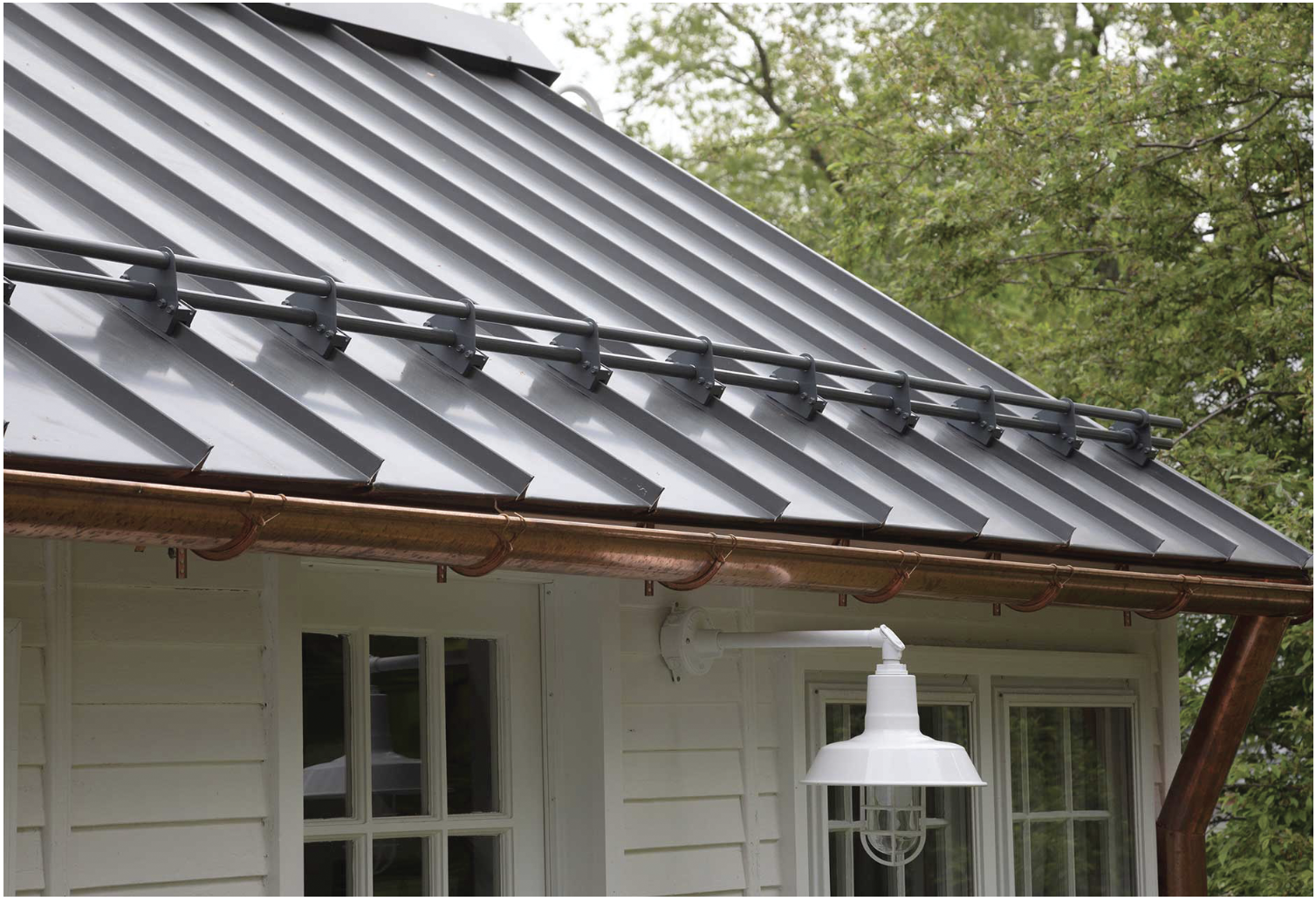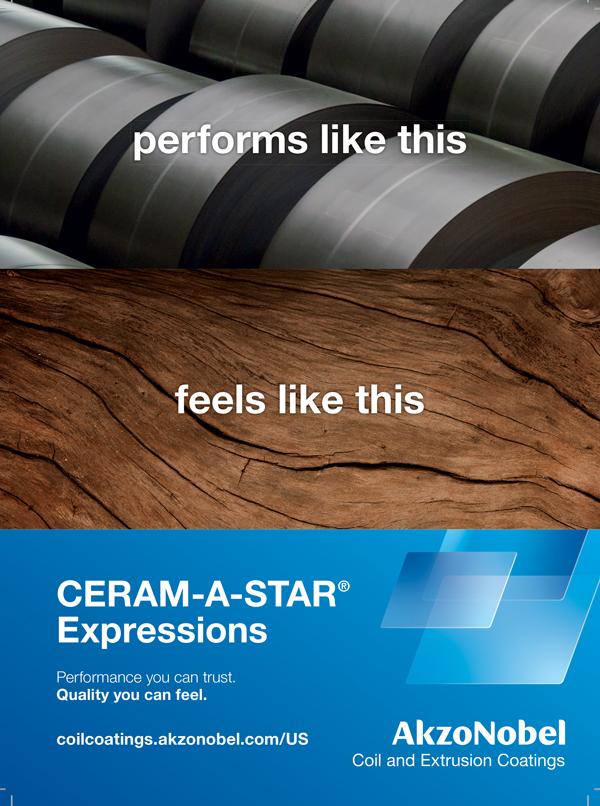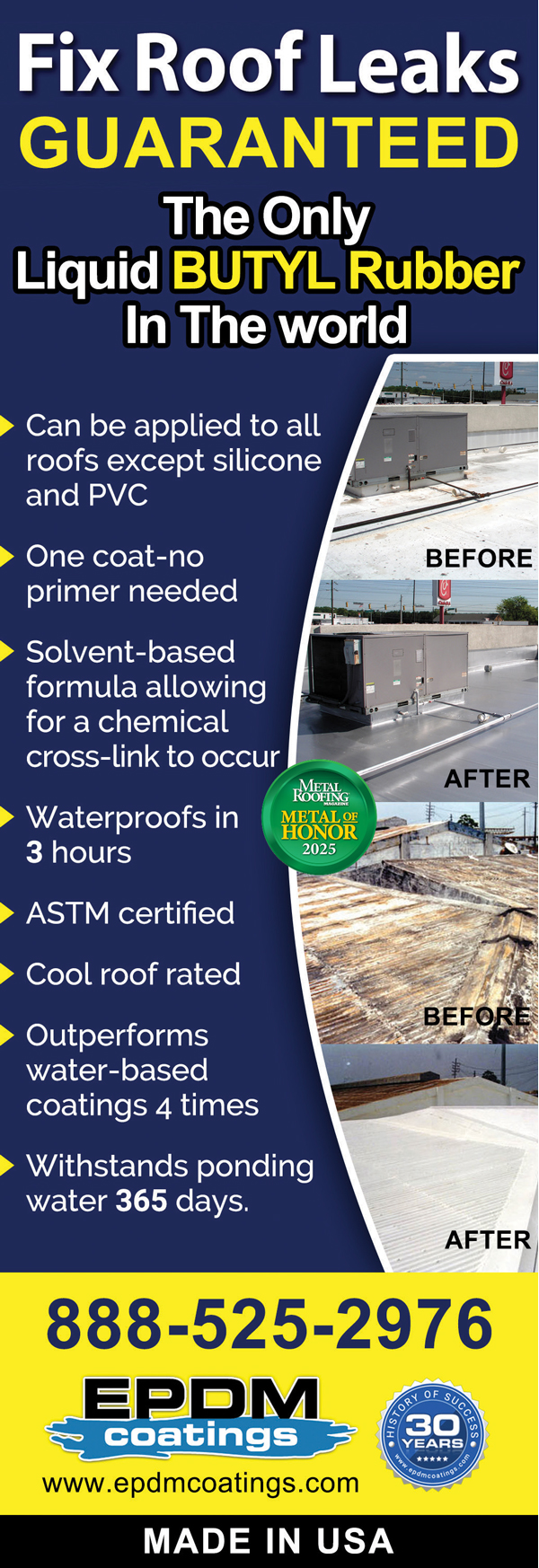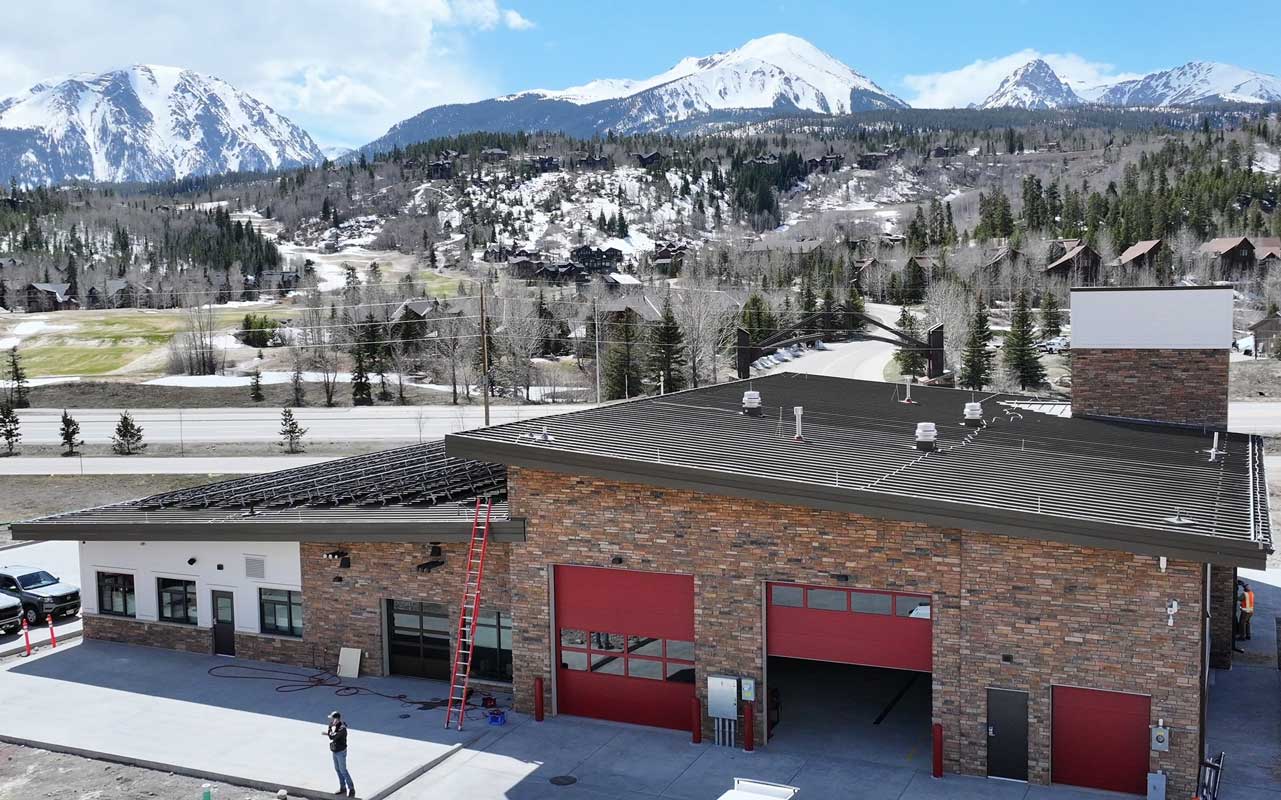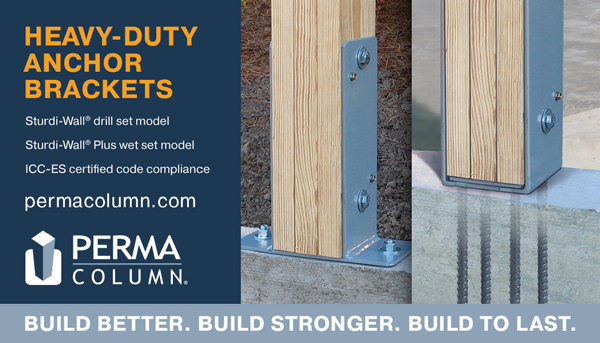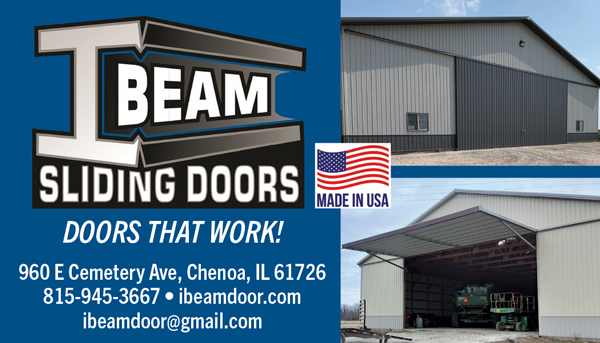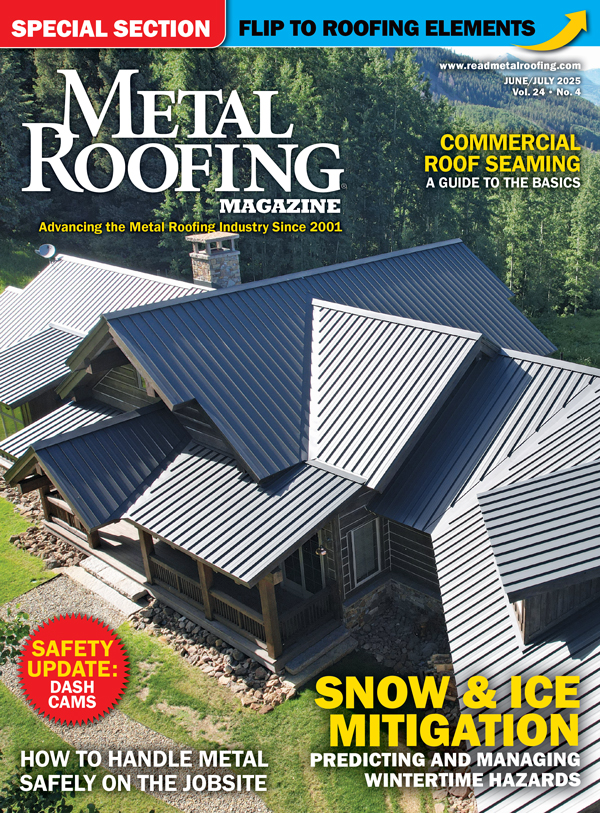Courtesy of AceClamp
Unlike the rough surface of a typical shingled roof, most forms of metal roofs, when wet, exhibit a very low coefficient of friction. In other words, a buildup of snow can become an avalanche as it cascades off the roof. Starting with the gutters, it will work its way down, damaging anything or anyone below.
The purpose of a snow retention system is to hold snow on the roof surface while allowing it to melt slowly, rather than cascade all at once off the roof onto whatever or whoever is on the ground below.
Snow retention systems include bars, tubes, round and square, as well as individual pads of all sizes, shapes, and materials. Here are some of the things to consider when deciding which system best suits a customer’s needs.
Pads, adhered or fastened to the roof surface, are most effective in areas with light snow and residential roofs with relatively low slope or pitch. Pads are installed on canopies, or short overhangs where snow buildup will be minimal but sliding snow will be more of a nuisance than a danger. Unless carefully installed, a small percentage of adhesive-applied pads will likely need to be re-adhered to the roof within a couple of years. Steeper slope roofs and low slope roofs in high snow areas would best benefit from the bar types or multiple tube snow retention systems. We’ll look at the different criteria for deciding which to choose later on.
The type of roof — standing seam or through fastened — is the first consideration when determining which type of snow retention system should be used. If the roof is through-fastened, one can choose either an adhered pad system or a system comprised of pads or brackets that fasten through the roof into the structure below the metal panels. If the roof has standing-seam panels, either pads that adhere to the surface of the panel can be used or a system that attaches to the standing seams using non-penetrating clamps designed to fit the seam type. It is better to secure a system without penetrating the roof whenever possible for obvious reasons.
Things to consider when choosing a snow retention system:
• Local building code snow loads
• Roof pitch
• The aesthetics of the roof. (Does the customer want the snow retention system to blend in with their roof, matching the roof panel color, etc.?)
• If the customer lives in a governed community, the HOA or POA may have guidelines that must be followed.
As a professional roofer, you should consider contacting a few manufacturers of snow retention systems. Their engineers will recommend the best method for you, prioritizing the local building code required for that snow load. They will assess the pitch of the roof, the specific type and material of the roof panel, the potential for drifting snow, and the areas around the building that need to be protected from sliding snow (i.e. entrances, walkways, parking areas, prized shrubbery, decking, etc.).
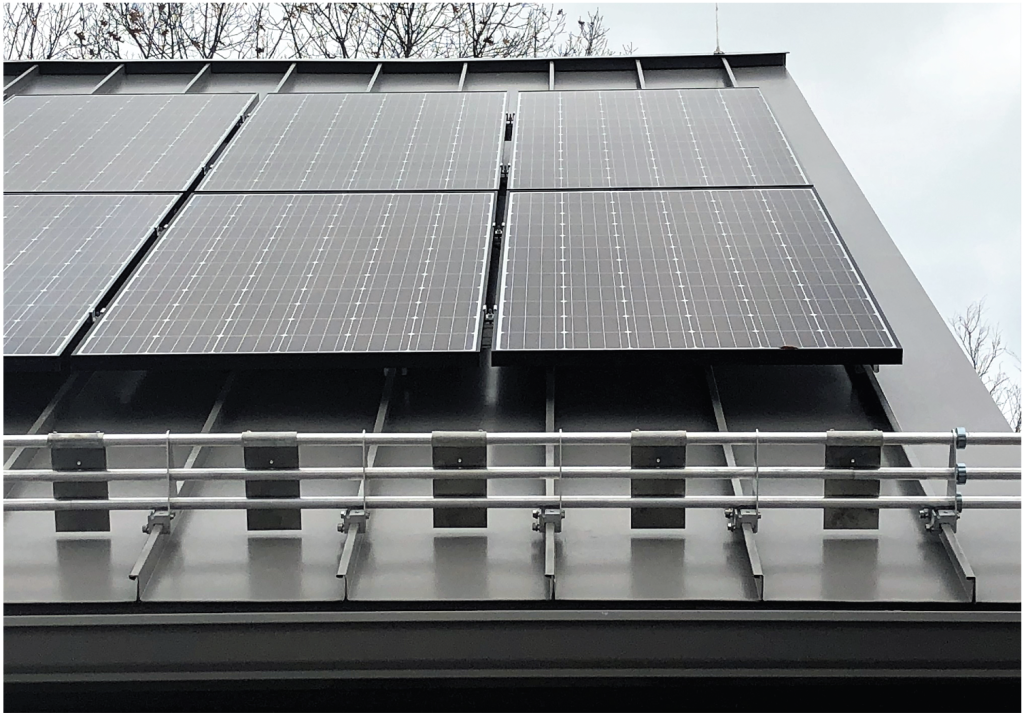
The engineer will then recommend the position and placement of the pads or snow rail system based on all of the above conditions. They will have access to testing data showing the strength of the bars or rails and the design loads for the clamps/brackets attached to the roof panels.
That information goes into the calculations to determine if a single rail near the eave will be sufficient or if multiple rails are necessary. The calculations will show the most effective placement if multiple rails are required. Steep roofs, generally in excess of a 6:12 pitch, may require a system that consists of two or more bars mounted on the brackets, especially to handle the higher snow loads. The higher snow loads may also require multiple two- or three-bar systems to meet the building code requirements.
If there will be vent pipes or other accessories on the roof that could be damaged by sliding snow, consider installing a short section of rails or tubes above the accessory. Suppose you have an intermediate rail spaced close to the A/C unit or a vent. In that case, it might be possible to install that rail right above the unit to protect it instead of adding an additional section.
Snow guards have improved in recent years to attach securely to the proliferation of different standing seam roof panel configurations without damaging the roof panel. In response to the addition of PV arrays on metal roofs, manufacturers have created new systems to keep the snow from sliding from the slick surface of the PV arrays. At the same time, keeping the PV panels clear of snow increases the panels’ effectiveness in creating electricity for the home. If you plan to add solar to a customer’s roof, consider the roof, the solar array, and the snow rails as a complete system.
Do’s and Don’ts:
• Do involve the snow rail manufacturer at the beginning of the search.
• Do go with a manufacturer who has a proven track record and will answer your questions during the proposal stage and if problems arise during installation.
• Do (if the recommendation is to install two or more rails located between the eave and the ridge) begin with the uppermost rail first. If you install the lower rail and it snows before rail #2 or #3 are installed, the lone rail down by the eave may be overloaded by all the accumulating snow sliding down from the ridge. Roof and gutter damage can be expensive! MR
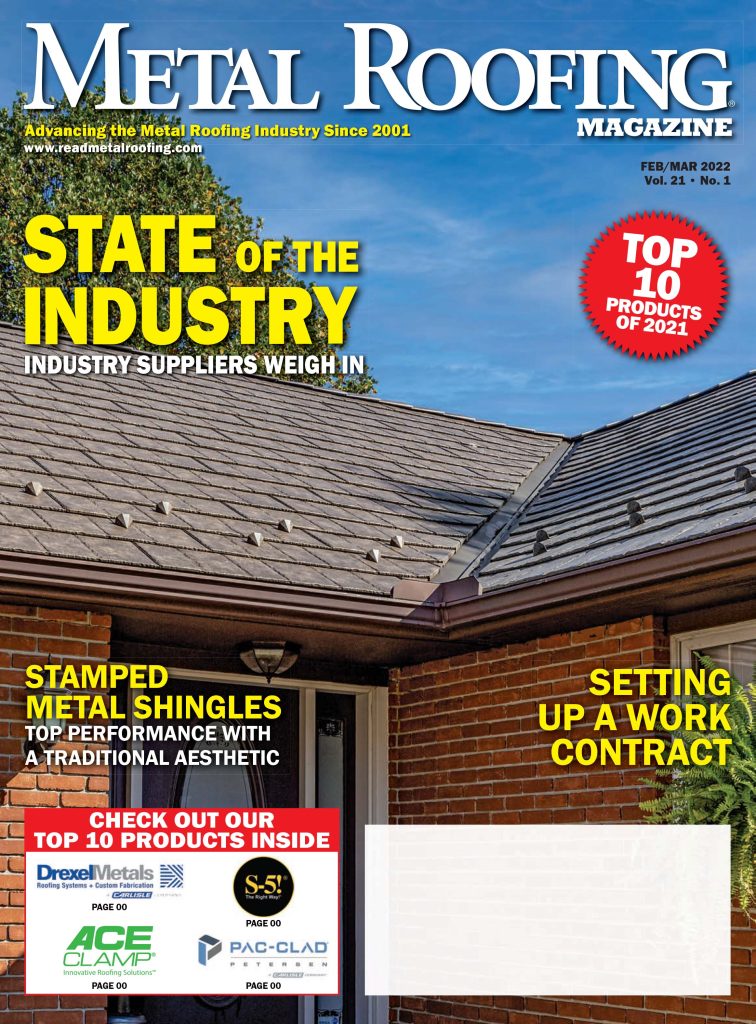
Sign Up For A Free Subscription
Anyone who is involved in the construction trade is welcome to sign up for a free print or digital subscription to Metal Roofing Magazine, which has been advancing the metal roofing industry since 2001. This go-to resource for metal roofing professionals is published 7 times per year.


